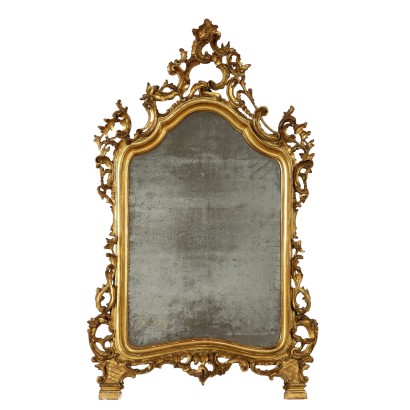Work of Aldo Spoldi - Figure 1979
Features
Artist: Aldo Spoldi (1950)
Artwork title: Figura
Age: Contemporary
Subject: Human Figures
Artistic technique: Drawing
Technical specification: Pencil on Paper
Description : Figura
Pencils on paper. Signed and dated lower right. Ironic, playful, theatrical artist Aldo Spoldi is a painter, sculptor, musician, writer, professor at the Brera Academy and a member of the Pataphysics Society, initially defined as the science of imaginary solutions by its creator, the French writer and playwright Alfred Jarry, and often regarded as a logic of the absurd, an eccentric metaphysical scheme and a parody of metaphysics. Spoldi's production, in all its forms, follows this pataphysical vision of reality. , accruing its variations in the wake of changes in the weather. This figure of a man on a bicycle appears almost visionary, due to its lack of parts, as if the character were dissolving. The work is presented in a frame.
Product Condition:
Product in good condition, shows small signs of wear. We try to present the real state as fully as possible with photos. If some details are not clear from the photos, what is reported in the description will prevail.
Frame Size (cm):
Height: 82
Width: 62
Depth: 3
Artwork dimensions (cm):
Height: 70
Width: 50
Additional Information
Artist: Aldo Spoldi (1950)
Aldo Spoldi was born in Crema in 1950, where he lives and works. He studied at the Beato Angelico art school and at the Brera Academy of Fine Arts in Milan. An ironic, playful, theatrical artist, he is a painter, sculptor, musician, writer, professor at the Brera Academy and a member of the Pataphysics Society.nThe development of his activity coincides with the transformation of art and society, each of which is reflected in the various phases of his work.nIn 1968, the year of youth protests and rampant Marxism, he brings together a gang made up of high school mates, a group of mockers who perform burlesque performances in the public streets of some cities. In 1977, the year of the fall of Marxism and the birth of postmodernism, after establishing the Oklahoma Theater, he began his pictorial activity characterized by theatrical images. In 1985 and in the years of financial immateriality, he transformed the humanistic theater of Oklahoma into a bank, a limited liability company and, finally, a B.D.O. Spa. In 1996, during the years of the establishment of the United Europe and the diffusion of the internet, it produced, through the B.D.O. Spa, as an educational project, the virtual characters (the artist Cristina Show, the photographer Met Levi, the philosopher Andrea Bortolon and the critic Angelo Spettacoli) and publishes the books Lessons of aesthetic education, Cristina Show, fragments of life, Lessons of philosophy moral. In 2007, the year of the great financial crisis and the search for concreteness, he designed the Accademia dello Scivolo and in 20121 published the book by the philosopher Andrea Bortolon Un Dio non può fare male.
Age: Contemporary
Contemporary
Subject: Human Figures
Artistic technique: Drawing
Il disegno è il processo di tracciare segni su una superficie tramite l'applicazione di una pressione o il trascinamento di un apposito strumento sulla superficie. Gli strumenti sono: matite in grafite o colorate, penna, pennelli fini con inchiostro, pastelli a cera o carboncini; i supporti tradizionali più frequenti sono carta, cartoncino, tavola, muro, tela, rame, vetro.
Technical specification: Pencil on Paper
Other customers have searched:


































